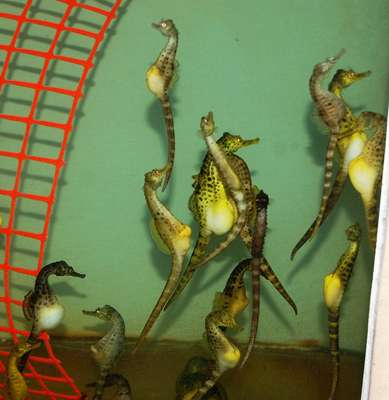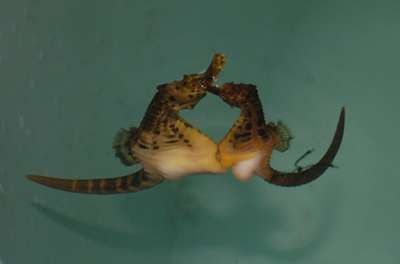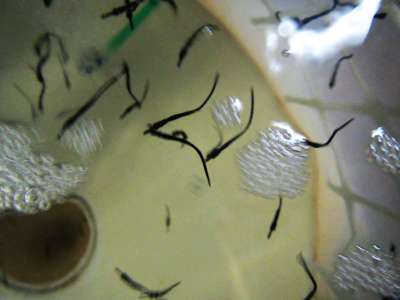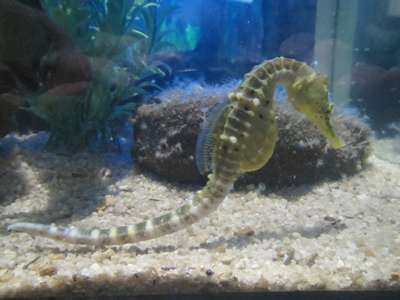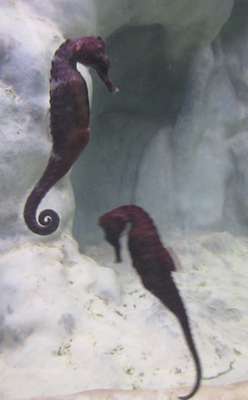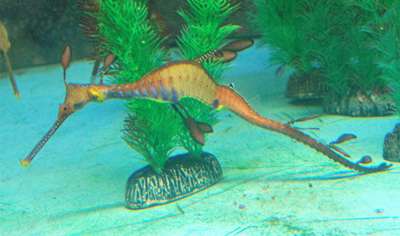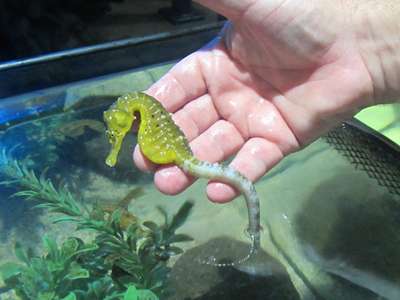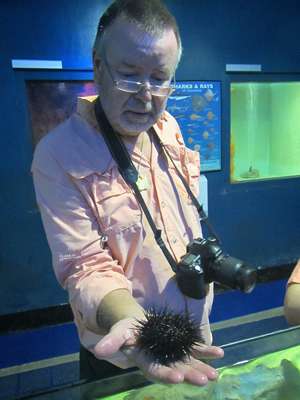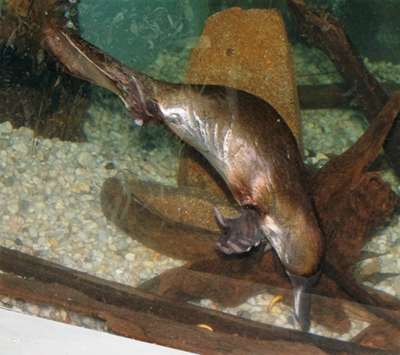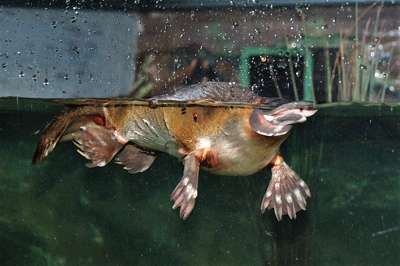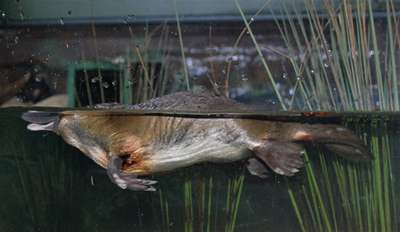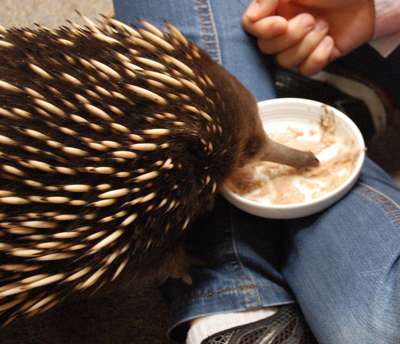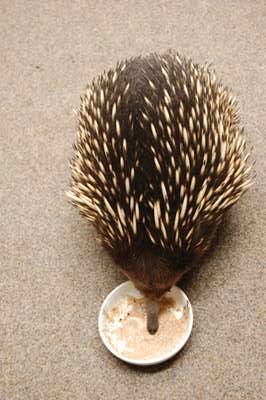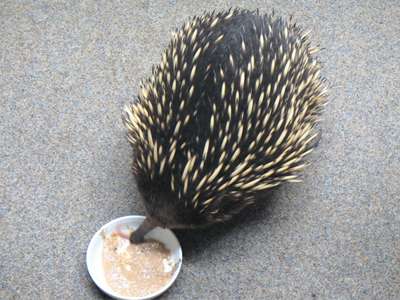Platypuses and seahorses

|
Thursday 4th February 2016 We had stayed at the Beauty Point Campsite instead of a free
site because we were now in need of a dump station to empty the chemical loo,
and a drain to empty our waste water, as well as a tap to top up our fresh
water tank. We had assumed that a commercial campsite would have all the
facilities needed. Wrong. Dump stations, it seemed, were a matter
for the local council, and as such are often to be found in public places
rather than privately owned campsites. Now, that is an excellent idea as it makes them available to
everyone free of charge, which is to be applauded. However, that did not
help our present situation, as the nearest one was 10km back the way we had
just come in Beaconsfield. No problem, said the nice lady. The
waste and fresh water can be dealt with here, use our bathroom facilities
tonight, then go to the dump station in the morning. Problem solved, and
lesson learnt. This morning we were up and on the road soon after nine, as
we planned to join the 0930 tour of the Seahorse farm. This was a very
interesting tour, where we saw a variety of types of adult seahorses and were
shown new-born to adolescent seahorses in large tanks where they were being
farmed. We heard about their mating and care of the young in the wild. It
seems that the numbers of seahorses in the wild have fallen in recent years as
a result of harvesting and of habitat destruction. Seahorse World run an
approved seahorse farm and are licensed to practise captive breeding and to
export live seahorses all over the world.
Hippocampus addominalis – the Pot Bellied Seahorse. Ahhhhh.
These seahorses were just a couple of days old.
There was a range of different types of seahorse –
some could change colour to match their environment.
Not a seahorse, a Weedy Seadragon. If
you behaved, you were allowed to briefly hold a seahorse.
If you didn’t, you were made to hold a sea urchin! We found the visit fascinating and really enjoyed seeing the
seahorses close up. We have been lucky enough to see them occasionally in
the wild, but they are very shy creatures and don’t hang around long
enough to allow a good look. Next on the agenda was the visit to the Platypus House which
was just next door. First we were shown an excellent video of a platypus
in the wild that was tracked to find the location of its burrow. A camera
was then inserted into the burrow so that we could see an egg hatching and then
follow the development of the young platypus until it was ready to leave its
mother and begin an independent life. We were then taken to the platypus ponds where we saw three
females, and a male who was kept separate. It seems that they had not yet
had any success in breeding the platypus as their first male proved to be too
old to mate, and they then had to wait for it to die before they could replace
it with a younger one. That had happened just recently, but the new male
is not quite old enough, so they have to wait longer. Eventually they
hope to be able to put a breeding programme in place.
We were delighted to get these views of the platypus, as
although we had seen some in the wild, we had only seen the bits of them
visible on the surface, and that at a distance. So it was wonderful to
watch them through the glass. We shot some video clips of them too, but
as yet the technology of the blog does not support video. Last of all we went into the echidna garden, where we had
strict instructions not to touch the animals and not to get closer than a
metre, to avoid them becoming tame. Admirable plan, but they forgot to
tell the echidnas.
The echidnas were definitely not shy or reticent about
human contact when food was on offer.
They have an amazingly long tongue that whips out of
their long mouths and scoops up their food. Both Seahorse World and the Platypus House were well worth
the visit. It is a shame to see wild animals in captivity, but if they
are threatened in their natural habitat, it is a way to make sure they don’t
become extinct. |
